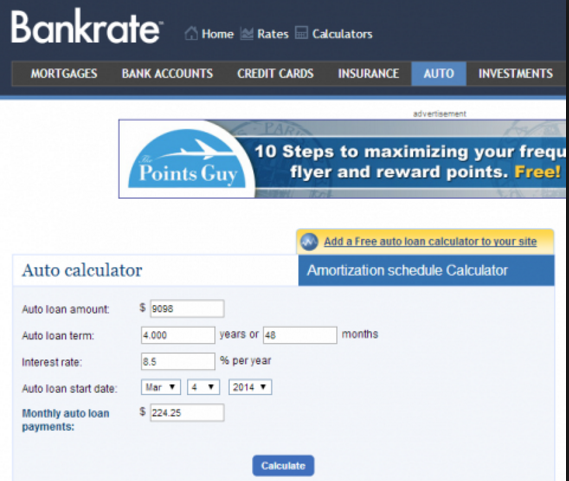In the penultimate class, we will review key terms that you should know for the final exam.
Here is a summary of the key terms and questions that will be on the exam:
·
Percentage
Change Formula – be able to calculate what the change in price was when
given
an old and a new price
·
Percentage
Discount Formula – you get x% off – the new sale price is?
·
Percentage
Mark-up Formula – you want to make x% profit over the cost of an item –
how
much should you charge?
·
Future
value formula – how much will the value of a savings or retirement account be worth
if it grows at x% per year, over a 10, 20, 30, or 40-year period? Be able to write out the formula to solve –
extra credit for using Excel to find the exact answer (future value)
·
What is
depreciation? By how much per year does
the average car depreciate in value?
·
Be able
to use Bankrate.com to calculate the total interest paid on a car loan or a
mortgage
·
What web
sites would you go to for used car pricing information?
·
What is
net worth? How do you calculate it?
What is an asset? What is a
liability?
Give 3 examples of a
current liability.
·
What is a
budget? Surplus? Deficit? Is a budget
more related to net worth or net income?
Why?
·
What is
meant by the risk vs reward of an investment?
Which investments are risky?
Which investments are least risky?
Which investments give higher rates of return – risky ones or less risky
ones?
·
What is
the max percentage you should allocate to housing as far as your budget is
concerned?
·
What’s
the most you should pay for a house as a multiple of your annual gross income?
·
When
would you not consider buying a home?
Why?
·
What is
liquidity mean as far as investing is concerned? Which investments or assets are liquid? Which
are illiquid?
·
What are
the advantages of a Roth IRA and a 401K?
·
What are
the biggest expense categories (as a percentage of your gross income)?
·
Why are
many younger folks net worth negative while early retirees net worth positive?
·
List 3
good uses of credit (debt). List 3 bad
uses of credit (debt).
·
What is
the most important variable that the credit bureaus use in the calculation of
your FICO score?
·
Why
should you pay down your debt as fast as possible?
·
What is
an emergency fund? About how much should
you set aside for it in terms of number of total avg monthly expenses?
·
What is a
W-4 form? What are exemptions/allowances
on a W-4 used for? What other info is
required when filling out a W-4 form?
·
What is a
W-2 form? What key info do you find on
it?
·
What’s
the difference between APY and APR?
·
What is
the FICA tax? How much do employees
typically pay in to FICA as a percentage of their gross income?
·
Be able
to convert a decimal to a percentage to a fraction – esp for 1.0, 2.0, 0.5,
0.3333, 0.6666, 0.25, 0.2, 0.125, three-eighths, seven-eighths
·
What is a
credit vs a debit (in a checking account registry – transaction history)
·
How much
of a percentage gain do you need to get back to break-even after suffering a
loss of x%?
·
How to
factor in the cost of CT state sales tax into the final purchase price
·
What is
the historical rate of inflation in the U.S. and what does that do to the price
of an item over a 1-year, 2-year and 3-year period?
·
If you
double your money, what percentage increase is that? Same question for tripling your money.
If you have any questions, please ask. Good luck!









